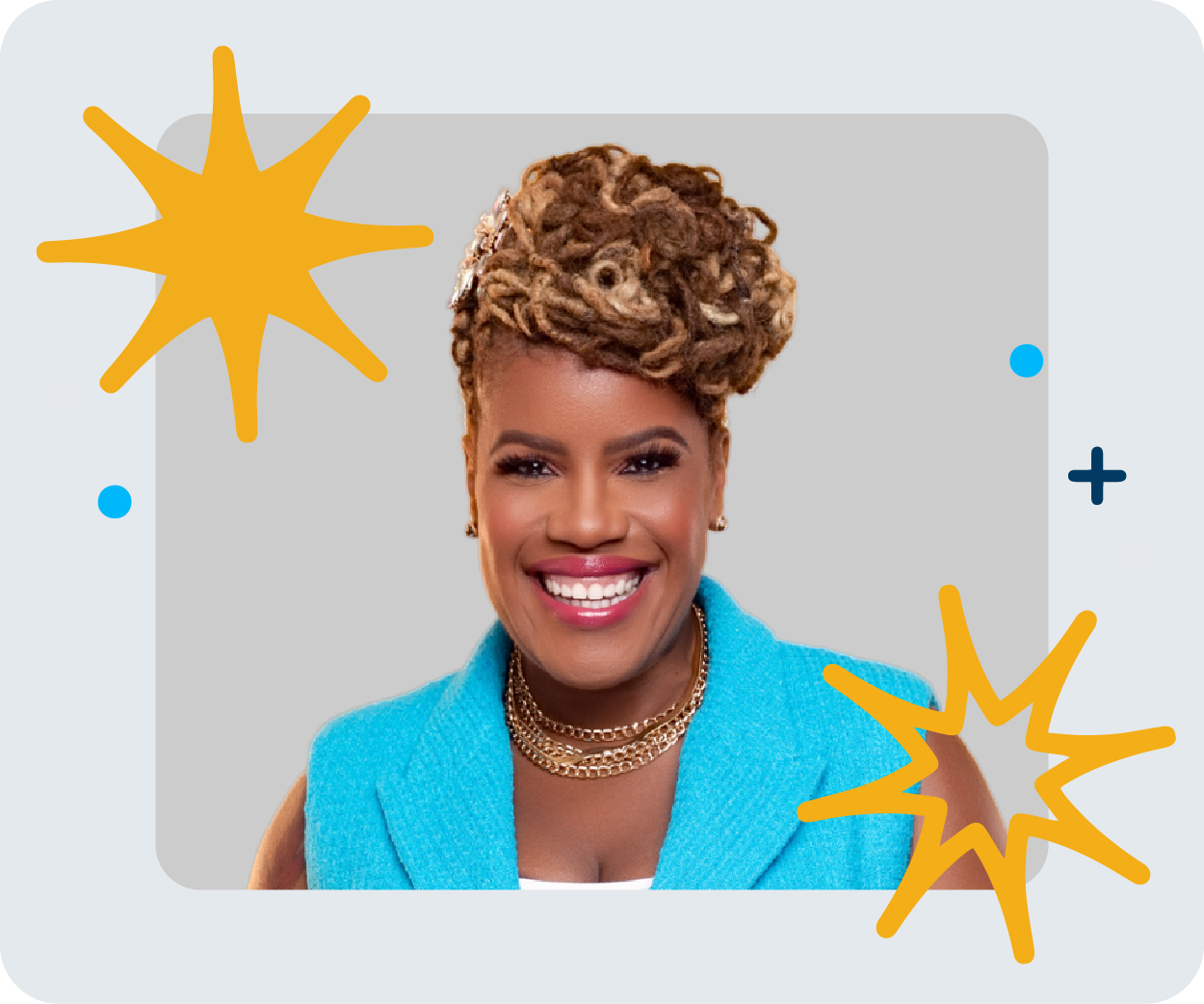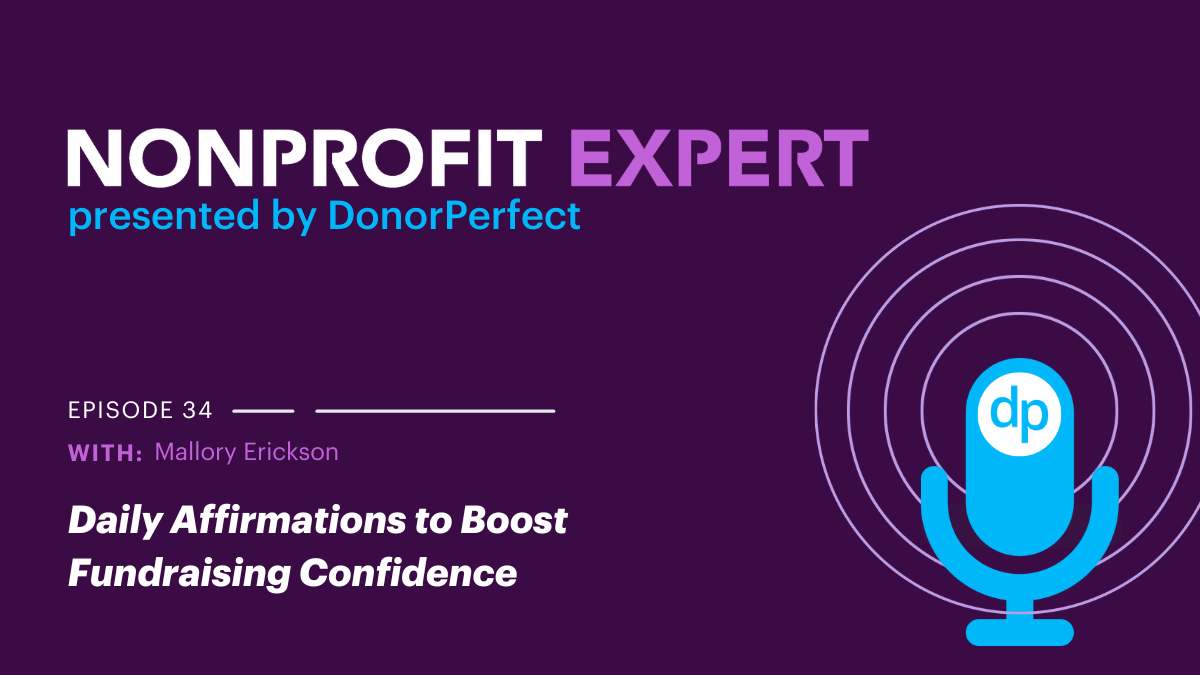At every level of a nonprofit—whether you’re managing a team, coordinating programs, or engaging with donors—leadership plays a pivotal role in shaping impact. But what does meaningful leadership really look like in today’s fast-paced, often resource-limited nonprofit environment?
In a recent episode of the Nonprofit Expert podcast, we sat down with acclaimed nonprofit strategist, speaker, and leadership coach Kishshana Palmer to explore a bold, empathetic framework for leading teams with intention. The episode dives deep into what makes teams thrive, why vulnerability and strengths-based leadership are essential, and how to foster a culture of accountability that supports both staff and mission.
At the heart of Kishshana’s leadership philosophy is a powerful acronym: SPARK. It’s a model that brings clarity, structure, and soul to the work of building strong, connected teams.
What is the SPARK model?
Kishshana introduces the SPARK model as a roadmap for nonprofit leaders who want to lead with authenticity and effectiveness. SPARK stands for:
- Sharing information
- Playing to strengths
- Asking for input
- Responding to individual needs
- Keeping commitments
Each element in this framework addresses common pain points nonprofits face—communication gaps, burnout, misalignment—and offers practical, people-first solutions.
Let’s take a closer look at each principle and how it can show up in real nonprofit life.
Sharing information: Build trust through transparency
One of the fastest ways to lose team morale is through a lack of communication. When staff are left guessing or feel out of the loop, it breeds confusion and disengagement. That’s why Kishshana begins with sharing information—because transparency isn’t just about data; it’s about trust.
“People want to feel included, informed, and involved. When your team knows the ‘why’ behind the ‘what,’ they become your biggest champions.” – Kishshana Palmer

Put it into action
Ask your team about what kinds of information they need to know to do their jobs well, and what kinds of information would help them feel more connected to your organization and your mission. Smart transparency means not overwhelming your team with every possible piece of information, but giving everyone the information they need to thrive.
- Share key decisions in real-time, not just after the fact
- Offer visibility into metrics that matter—donor retention rates, campaign outcomes, and budget trends
- Create space for questions and open dialogue
Do it in DonorPerfect
Use Dashboard Analytics to generate visual reports and share campaign progress across departments. Customize what’s shown so that everyone on your team, from fundraising to program staff, can understand how their work contributes to the big picture.
Playing to strengths: Unlock your team’s potential
Too often, nonprofit staff wear multiple hats—sometimes out of necessity, other times because leaders overlook their unique gifts. Kishshana challenges us to lead differently: “We can’t keep hiring rockstars and then give them tambourines.”
When leaders identify what each person naturally excels at and align responsibilities accordingly, performance improves and burnout decreases.
Put it into action
Let’s say your team includes a detail-oriented admin who thrives on structure. Assigning them to manage donor records or streamline workflows will energize them. Conversely, your relationship builder might shine in donor stewardship or frontline fundraising. Create campaign roles for your team members, as recommended in DonorPerfect’s Giving Tuesday guides.
- Let your storyteller craft donor profiles for communications
- Assign your data guru to analyze giving trends
- Empower your planner to forecast year-end campaigns
Do it in DonorPerfect
Assign custom roles and permissions so that users see the tools and dashboards most relevant to their strengths. Let your database administrator focus on clean data entry, while your Development Director zeroes in on campaign development and major gift planning.
Asking for input: Lead with inclusion
The people closest to the work often hold the clearest insights—and inviting their input isn’t a distraction from leadership, it is leadership. As Kishshana reminds us, moving from a top-down approach to a more collaborative style creates space for smarter decisions and stronger teams.
“Leadership isn’t about having all the answers. It’s about knowing who to ask.” – Kishshana Palmer
Inclusive leadership ensures that decisions are informed by diverse perspectives. It also increases buy-in and signals to staff that their voices matter.
Put it into action
You can’t know how your team is feeling until you ask them directly. Offer a variety of avenues for accepting feedback and ideas so your team members can participate in whichever way is the most comfortable for them. Here are a few ideas
- Hold monthly feedback sessions or anonymous surveys
- Encourage suggestions during team huddles or planning retreats
- Use reflective prompts (“What’s one thing we should stop doing?”)
Do it in DonorPerfect
Leverage constituent surveys and segmentation tags not just for donors, but internally. For instance, tag insights from program staff on what messaging resonates with clients or gather board input on stewardship preferences.
Responding to individual needs: lead the whole person
Every employee brings more than just their job title—they bring values, hopes, stressors, and aspirations. Kishshana reminds us that strong leadership requires seeing and supporting the full person behind the role.
Supporting the whole person can look like:
- Offering flexible hours for caregivers
- Providing professional development based on individual goals
- Checking in personally when someone’s struggling
“Empathy is a leadership skill—not just a personality trait.” – Kishshana Palmer
Put it into action
Imagine your communications manager is feeling overwhelmed by sudden tech changes. Document instructions visually, offer hands-on walk-throughs, and celebrate small wins. Over time, these adjustments make them feel not just capable but confident.
Keeping commitments: Model accountability
The final piece of SPARK is perhaps the most fundamental: keeping commitments. When leaders do what they say they will, it creates a culture of reliability and safety.
And when they don’t? The effects ripple. Staff lose faith. Projects stall. Motivation dips.
“Accountability doesn’t have to be harsh—it can be hopeful. It says: I trust you. I believe in this work. Let’s keep each other on track.” – Kishshana Palmer
Put it into action
This is something you can start doing right away. Small changes, like making your language more specific and precise, can help your team set appropriate expectations of each other, and know when to follow up as needed.
- Create a shared commitment tracker on your team communications channel
- Celebrate follow-through, not just new ideas
- Be specific with timelines: “I’ll send that by Friday at noon,” not “soon.”
Do it in DonorPerfect
Use SmartActions to set automated reminders for internal and external follow-ups. Whether it’s a grant deadline or a coaching check-in, let the system help you keep your word.
Leadership in action: real-world nonprofit examples
Nonprofits across sectors are bringing the SPARK model to life in creative, mission-aligned ways:
- Quarterly retrospectives help teams reflect on what’s working and what needs adjustment (S, A, K)
- Micro-campaigns empower staff to lead projects tailored to their expertise (P, R)
- Culture committees promote equity and inclusion by giving voice to lived experience (A, R)
These practices are more than just feel-good. They drive results and reinforce a culture where leadership is shared, not siloed.
Common pitfalls to avoid when implementing SPARK
Even the best frameworks can fall flat without thoughtful application. Keep an eye out for these missteps:
- Skipping follow-through – Don’t ask for input unless you plan to act on it
- Overloading rockstars – Playing to strengths doesn’t mean over-relying on your best people
- Vague expectations – Be clear about what’s due, when, and by whom
- Neglecting emotional health – Recognize and support mental well-being and morale
Avoiding these traps helps ensure SPARK becomes a sustainable part of your culture, not just a buzzword.
Why SPARK resonates with today’s nonprofit teams
Today’s nonprofit professionals are passionate but stretched thin. They crave clarity, connection, and care in their work environment. SPARK delivers on all three.
This model resonates because it acknowledges reality: limited resources, evolving demands, and human complexity. Yet it also offers hope and a tangible path forward.
Paired with DonorPerfect’s flexible features, SPARK becomes more than a theory, it becomes practice. Whether it’s streamlining data, automating workflows, or improving communication, technology can support the human work of leadership.
Try it yourself: SPARK self-assessment worksheet
Use the following prompts at your next team meeting or leadership retreat:
- Sharing information – What updates do we keep to ourselves that would empower the team if shared?
- Playing to strengths – What’s one task someone loves doing that we’ve overlooked?
- Asking for input – What’s our current feedback loop? Who might we be missing?
- Responding to needs – When was the last time we checked in with staff outside of performance reviews?
- Keeping commitments – Are we modeling the consistency we want to see?
The DonorPerfect team is here to help you find the SPARK you need to ignite your fundraising. New DonorPerfect customers see a 25% increase in funds raised in their first year, with many seeing results in just the first six months.
Are you ready for tools with thoughtful nonprofit leadership techniques built in? Get a free demo today and see how DonorPerfect can help you realize your fundraising potential.









